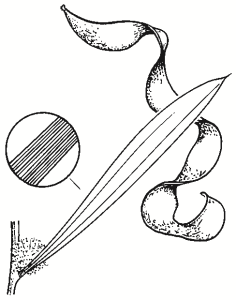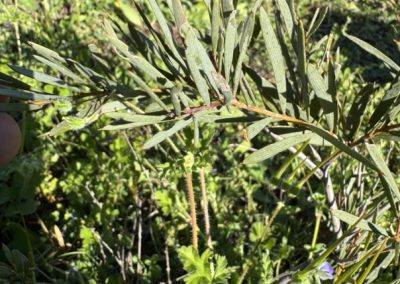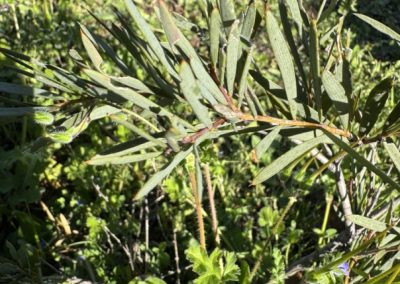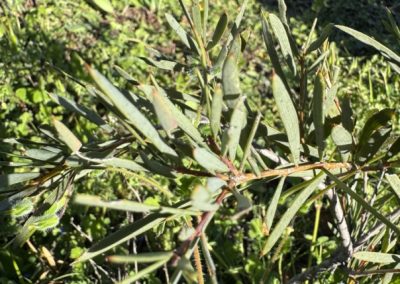Family:
Fabaceae
Acacia oswaldii
Miljee
Other Names: Umbrella Wattle (Vic), Nelia (Qld), Umbrella Bush.

Name Origin:
oswaldii — after F. Oswald, 19th century collector for F. von Mueller.
Regional Subspecies:
Similar Species:
Distinguish from Boree (A. pendula) by ‘leaves’. Miljee ‘leaves’ are sharp-tipped.
Occurrence:
Regional:
Noted in Brookong catchment. Becomes widespread to the west of the region.
Australia:
Mainland states and territories.
Habitat:
Widespread in various habitats and vegetation communities, including open eucalypt forest or among other acacias.
Habit:
Densely branched erect or spreading shrub or small tree, 2-6 m high. Finely fissured dark grey bark and angled or flattened branchlets. Sharp-tipped ‘leaves’ and large woody twisted pods.
Site Preference:
Heavy to moderately-drained soil. Partial or full sun. Tolerates drought and frost.
Characteristics:
Moderate growth rate. Lifespan beyond several decades. Often appears umbrella-shaped due to regular trimming by livestock.
Flowering:
Golden-yellow or pale-yellow, Oct-Dec.
Seed Collection:
Dec to late Feb. Monitor closely as seeds released immediately or within 1-2 days of maturity. Abundant seeder every few years.
Propagation:
From scarified seed (± 6 viable seeds per gram).
Regeneration:
From seed. Birds disperse seeds around vegetated areas.
VALUES:
Shade & Shelter:
Useful low-level cover in windbreaks.
Land Protection:
Legume — improves soil fertility by ‘fixing’ nitrogen.
Wildlife:
Prickly dense foliage good cover for birds.
Fuel:
Very good.
Timber:
Timber heavy, close-grained, durable and disagreeably-scented. Not commonly used, although reputedly suitable for cabinet work.
First Nations:
Clubs and other weapons made from timber. Seeds ground to edible paste.
Ornamental:
Ornamental value.
Other:
Subsistence fodder. Pods eaten by sheep.



